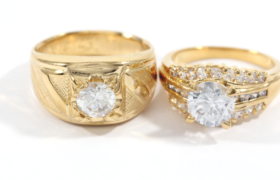What is gold plating exactly? Most people think it’s similar to a chocolate fondue, where you just dip your item into a luxurious fountain of molten metal and it comes out like instant bling. It’s actually not that simple, so we’re here to give you the rundown.
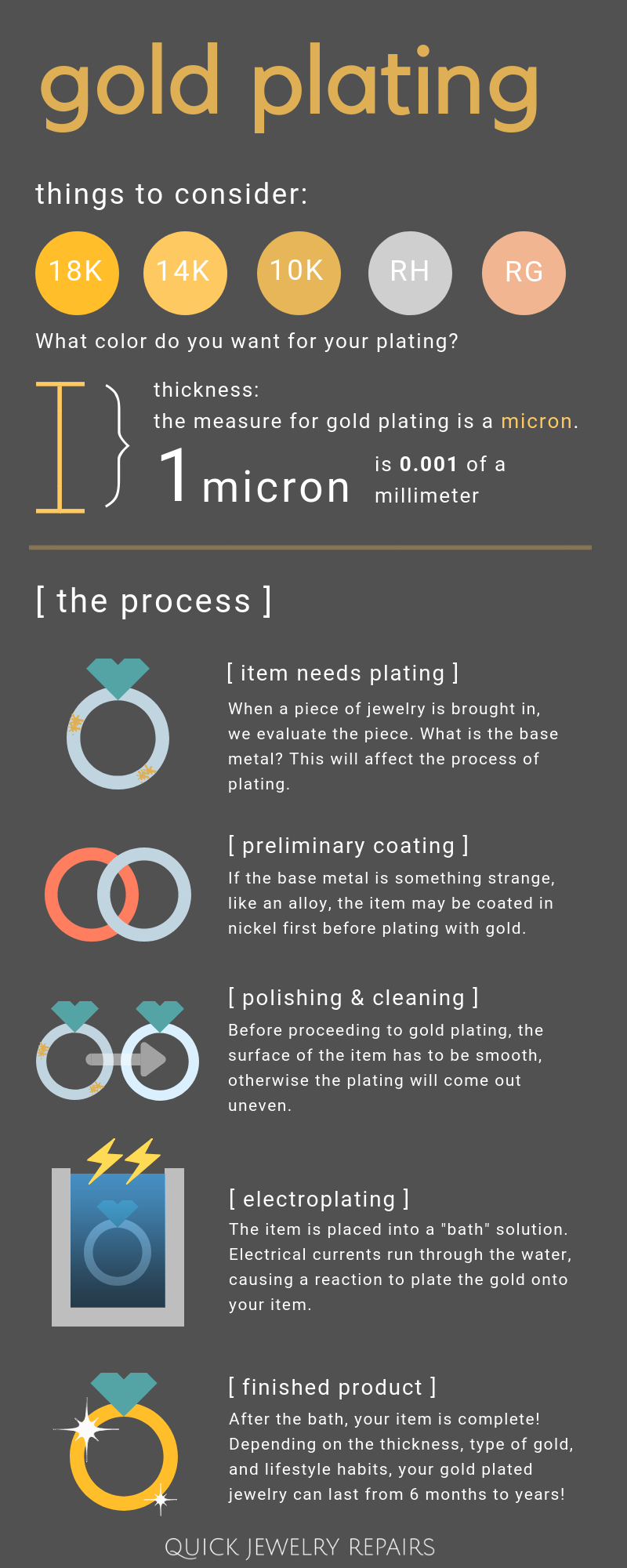
THINGS TO CONSIDER BEFORE GOLD PLATING:
- Daily Wear & Item Type: Before you start thinking about putting gold on everything, take a moment to consider your jewelry habits. If the piece you want to plate is something you wear very often (like a ring) and you’re a fairly active individual, the item will see a lot of daily wear. In cases like that, you’ll want to choose a hardier material and a greater level of thickness. If the piece is a pendant or earring that doesn’t come into contact with a lot of things, you can opt to just do a quick plating that will change or restore the color.
- Color: What color do you want your item to be? You can either match the original color if your item was formerly plated, or completely change it! Plating comes in 10k-24k yellow and rose gold, and rhodium plating for a white gold appearance. If you’re not sure about which metal to choose, you can also send a picture and the jeweler will match the color depicted.
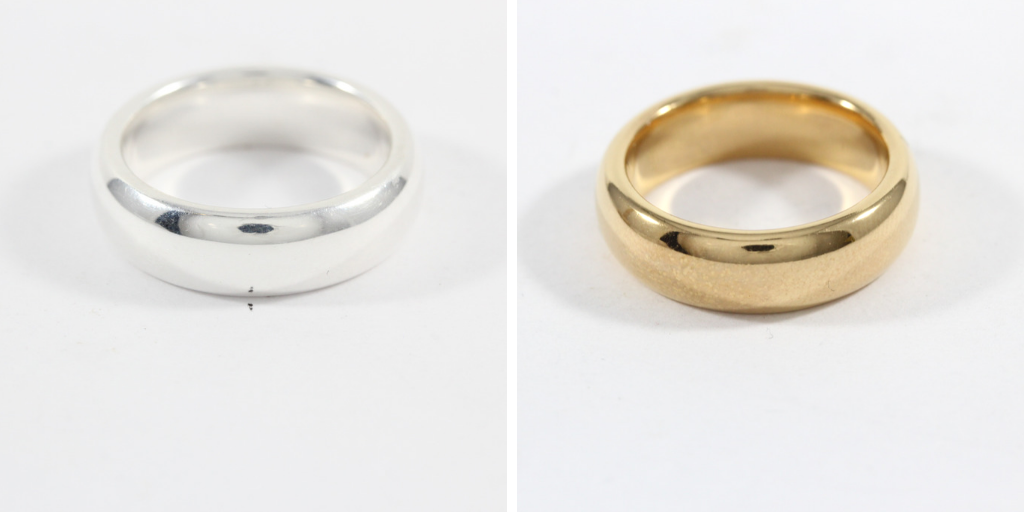
- Durability: The type of gold affects the longevity of the plating. Gold is naturally very soft, so if you choose high karat gold such as 22-24k (91% to 99%) pure, it will wear off faster. Selecting 10k or 14k gold will increase the hardiness of the plating, since 10k-14k gold is more durable.
- Thickness: Gold plating is measured by a unit called a micron, or 0.001 of a millimeter. Anything above 1 micron of plating is standard gold plating, with 2-3 microns being very good quality. Flash plating is a cheap alternative that is under 0.175 micron, and is only recommended for jewelry that isn’t worn on the hand since it will wear off quickly.
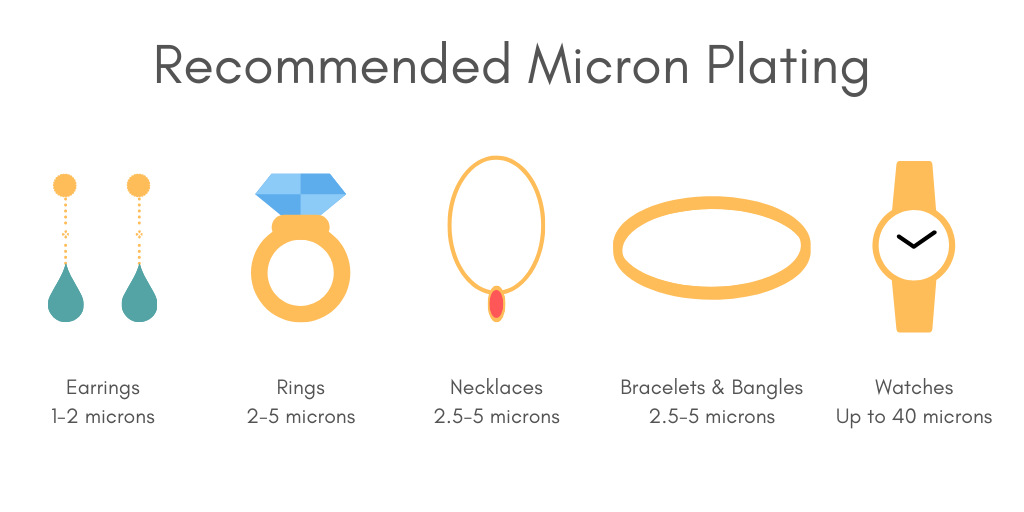
THE PROCESS OF GOLD PLATING:
Evaluation
When you send an item in for plating, the first thing we do is assess the piece. What kind of metal is it? Certain metals can prove to be difficult to plate due to composition or potential tarnishing.
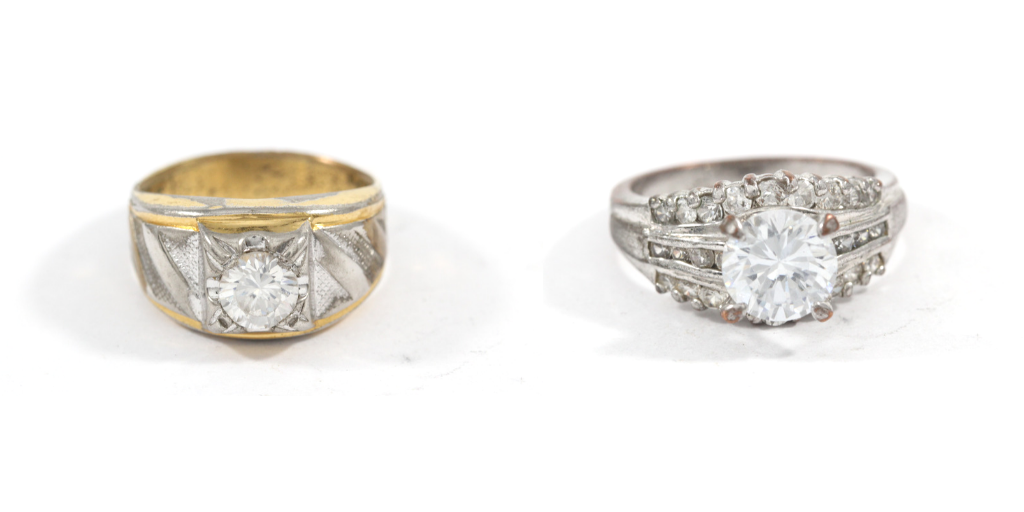
Preparation
After evaluation, the piece is prepared for electroplating via extensive polishing. The polisher will buff the surface of the item until it is perfectly smooth, because a slight bump or grainy texture will cause the gold plating to look uneven and blotchy.
For base metals that are difficult to plate on their own, the jewelry is polished and given a preliminary coating of either palladium or nickel before the gold is applied. Additionally, this step is used when the base metal, like copper, is known to atomically migrate outside of the gold layer to create spots of tarnish after plating. This strike step creates a barrier between the reactive base metal and the plated metal. This extends the life of the bright gold plating.
After polishing, the item is electrocleaned and rinsed several times in the following baths:
- Distilled water
- Neutralizer
- Distilled water
- Micron plating dip
- Distilled water
Electroplating
Once the item has been processed and approved, the gold plating begins! The item is submerged in a solution of water and “metal salt”, which contains the gold that will be plated onto the item. An electrical current is passed through the liquid, which dissolves the metals and chemically adheres the gold to the jewelry. The jewelry stays submerged for a certain period of time, depending on how thick the plating is supposed to be. Different metals require different voltages and temperatures.
The items to be plated are hung from a cathode bar, which is a pole with a negative electrical charge going through it. The pieces of jewelry connected to the cathode bar are also negatively charged. When the jewelry items are submerged in the tank an electrical charge is applied and the negatively charged jewelry attracts the positively charged ions present in the solution. The positively charged metal ions are submerged in the solution bath. When the cathode bar is lowered into the bath the metal jewelry gets plated.
The plating thickness can be controlled by adjusting the immersion time in the plating tank.
Gems are usually not affected during electroplating; however, costume jewelry stones are often glued on and may be loosened in the process due to the exposure to water. Stones that are very soft and fragile (such as pearls) should not be put into any plating solution at all.
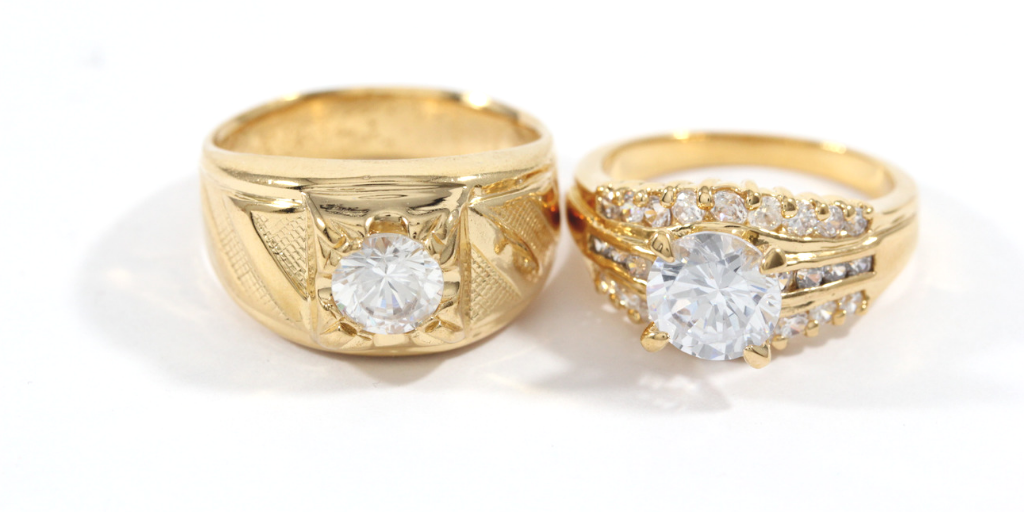
Rinsing
Rinse off the pieces with water and then hang them to dry.
Drying
The pieces are hung, preferably not touching each other, in order to dry.
Repeat – if Necessary
Occasionally, the immersion step into the chosen plating metal needs to be repeated. In order to improve the bonding between the plating and the underlying surface, occasionally a buffer layer must be applied between them.
